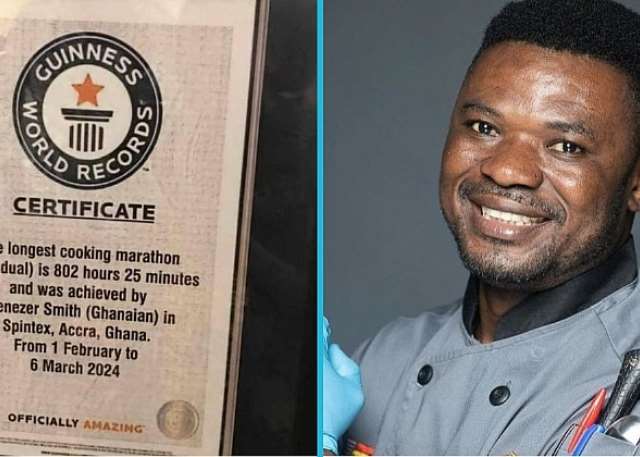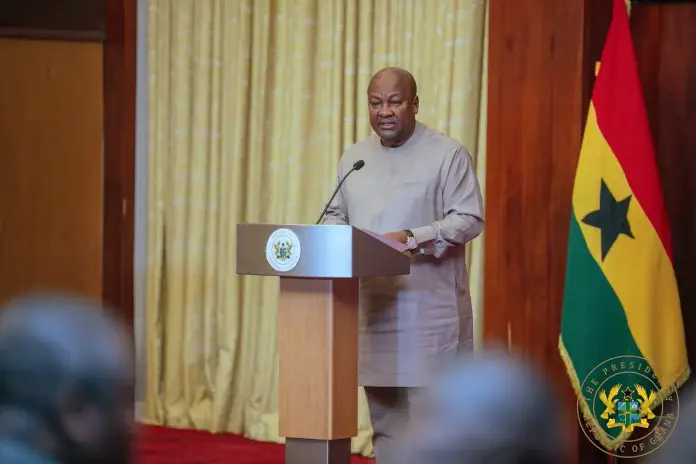The 29th Ghana Journalists Association (GJA) Media Awards took place on Saturday, November 8, 2025, at the historic Manhyia Palace in Kumasi, Ashanti Region, this years award marked a significant shift as the event moved outside Accra for the first time to promote national inclusivity.
The awards was held under the patronage of the Asantehene, Otumfuo Osei Tutu II, which drew a constellation of dignitaries, including President John Dramani Mahama as the special guest and keynote speaker, Acting Chief Justice Paul Baffoe-Bonnie, and KGL Group Executive Chairman Alex Apau Dadey.
The theme, “Safeguarding Ghana’s Future: The Role of the Media in Promoting Peace, Security, and the Fight Against Galamsey,” underscored the media’s pivotal role in tackling environmental degradation, social stability, and governance challenges posed by illegal small-scale mining (galamsey).
Key Highlights from the Ceremony
Awards and Winners: From 321 competitive entries, standout honorees included:
- Journalist of the Year: Godwin Asediba (TV3/3FM), recognized for his investigative human-interest stories amplifying marginalized voices.
- Sports Journalist of the Year: Muftawu Nabila Abdulai (JoySports), securing the award for the second consecutive year.
- Student Journalist of the Year: Clinton Yeboah (Luv FM), repeating his win from the previous edition.
- Best Illegal Mining Reporting: Ohemeng Tawiah (Luv FM), for impactful coverage on galamsey’s toll.
- Best Radio/TV Programme in Ghanaian Languages: Ekosiisen (Asempa FM).
- The Multimedia Group Limited (MGL) dominated with multiple wins across categories like current affairs, sports, and investigative journalism, reinforcing its leadership in Ghanaian media.
The evening opened with a somber minute of silence for journalists killed in the line of duty and those injured in recent anti-galamsey operations. Notably, three MGL journalists were hospitalized following an attack by illegal miners during an Environmental Protection Agency (EPA) raid in Obuasi, Ashanti Region.
The GJA President Albert Kwabena Dwumfour highlighted these perils, calling for government support for medical bills and safety protocols. President Mahama directed his Chief of Staff to cover the costs, emphasizing: “My administration will not tolerate any form of intimidation or attacks on journalists.”
Mahama’s Vow: A Crackdown on Galamsey
In his keynote address, President Mahama recommitted to an unrelenting battle against galamsey, describing it as an existential threat to Ghana’s water bodies, forests, and public health. He pledged “bold, irreversible actions” including:
- Deployment of advanced surveillance tech and dedicated anti-galamsey task forces.
- Establishment of special courts for swift prosecution of offenders.
- Enhanced protection for whistleblowers and journalists covering the issue.
Mahama also defended pending legislation like the Cybersecurity and Misinformation Bills as tools to combat falsehoods, not stifle press freedom, while vowing to shield media workers from harassment. His words resonated with the theme, framing journalism as a bulwark against environmental sabotage.
Broader Calls to Action
GJA President Dwumfour amplified the urgency, urging:
- The Asantehene to wield his influence for community-led anti-galamsey drives.
- Police to expedite probes into attacks on reporters and officials, demanding public briefings from the Inspector General.
- A national policy shift toward “irreversible” commitments, beyond rhetoric.
The event, preceded by a welcome reception at Lancaster Hotel on November 7, blended celebration with advocacy, signaling a media landscape more intertwined with Ghana’s sustainability struggles.
As galamsey continues to ravage rivers like the Pra and Ankobra, the awards serve as both a beacon of journalistic valor and a rallying cry for collective resolve.

 Tech2 years ago
Tech2 years ago
 Sports1 year ago
Sports1 year ago
 Buzz1 year ago
Buzz1 year ago
 Entertainment2 years ago
Entertainment2 years ago
 Entertainment2 years ago
Entertainment2 years ago
 Sports2 years ago
Sports2 years ago
 Sports9 months ago
Sports9 months ago
 News2 years ago
News2 years ago










